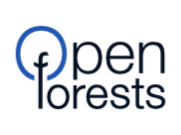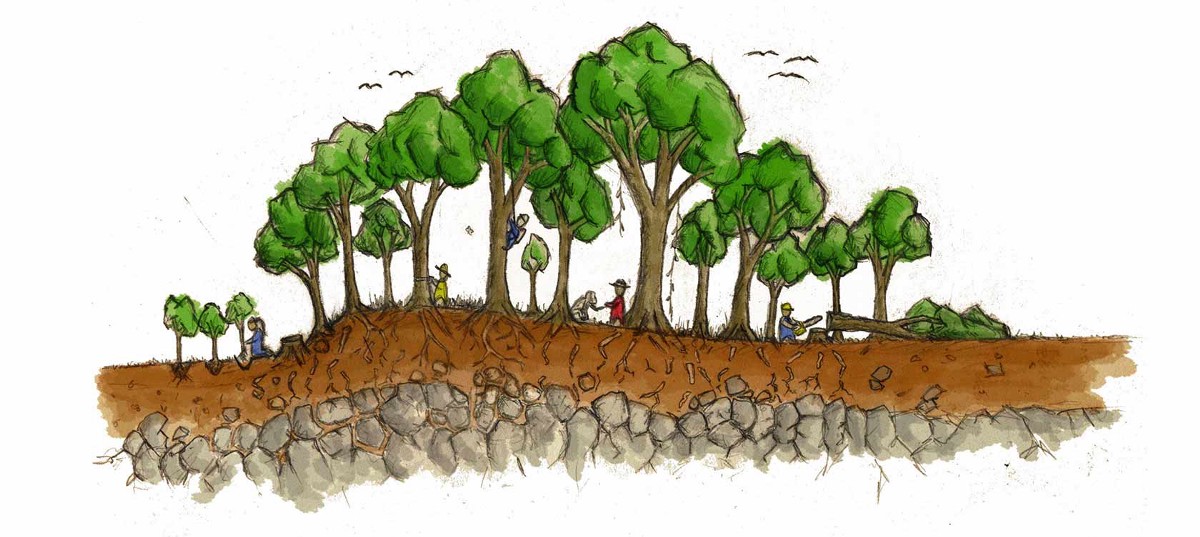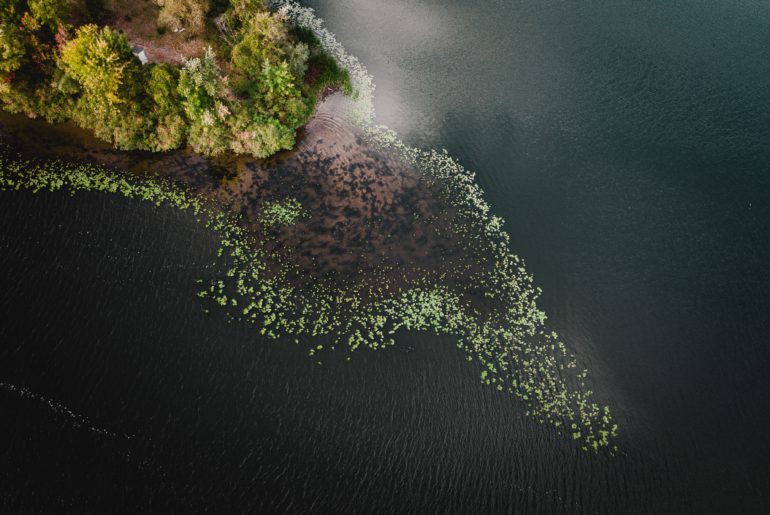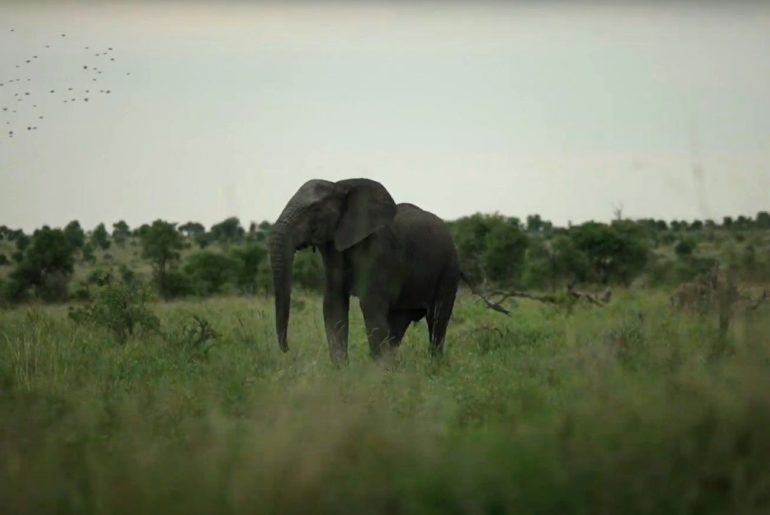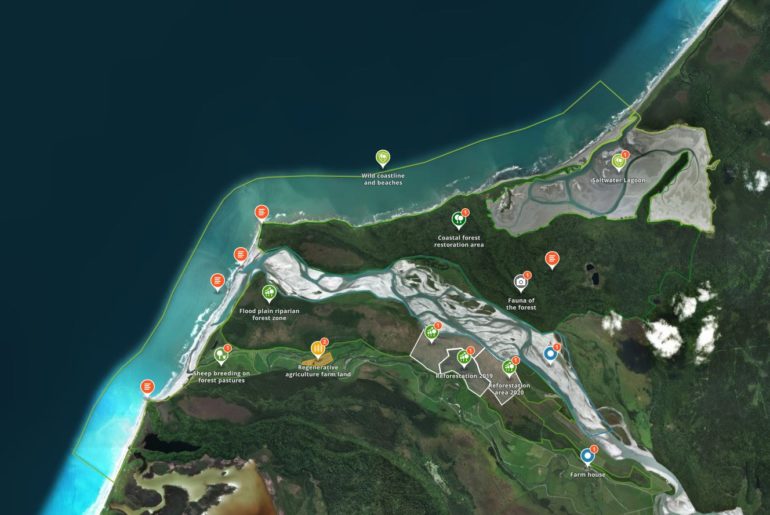Purpose for stories
Once upon a time a young lady was sitting on a clearing in the middle of a beautiful old forest. Birds were singing and bees humming. The wind was moving the leafs slightly. She felt tired, her eyes shut and she started to dream. She dreamed that she was able to fly, she reached the top of the canopy and had a fabulous view over the entire forest landscape below. Her eyes drifted over the green surrounding when she suddenly saw something that changed her life forever!
I bet you have become curious what this story is about and how it will end! Stories evoke interest and curiosity. They are the strongest tool to transfer knowledge and experience amongst people. The stories we tell and listen to influence what we think and believe. Already ancient cultures transported and activated their knowledge through narratives. We can decide which stories we are listening to and of course we can invent them in a creative process. By doing so, we are gaining the ability to shape our own future and the future of the forest ecosystems we envisage.
How to tell a forest story to reach and link up with the people in mind, and how to set free the deep well of power that a story can transport?
The right framing
The way of communication creates the reality. Is the glass half empty? Or is it half full? Shall we frame our story around the incredible loss of native rain-forests due to mining activities, or better around the success of the local farmer cooperative that has won the battle against the industry and is now reforesting the land?
Our brain is very susceptible for negative frames related to loss, costs and sacrifice. People react to it with denial of the facts as they can not personally cope with the heaviness of the events and their limited ability to react. Whereas a positive framing — the success of the local farmers — is more likely to reach people and catalyze activities.
Bridge the distance
The trouble with the distance is that our brain is structured in a way, that things that appear distant play a little role in comparison to events that take place in our close environment or community. From the distance it is for example difficult for people from western cultures to put themselves into the boots of a Latin American farmer and imagine how he feels when his livelihood and environment gets destroy by mining activities.
In order to bridge the distance, we need to search for a powerful way to create awareness on a global scale by connecting physically and mentally disconnected people. Digital media is playing an important role at transporting stories across fare distances onto the screens of millions of people.
However, it is not sufficient to just tell the story. Impact full stories also need to offer simple accessible solutions. For example the story might invite the recipient to support a certain farmer by spreading his story or by direct support. A personal engagement triggers a new consciousness that supports a closer relationship. This closer relationship is the starting point for further and lasting engagement.
Cultural and social identification
A story, especially a story of change, will only be listened to if you are able to link up to the cultural identity of the group to which you communicate. As a Punk for example, it it is difficult to convey climate issues to a banker. You need to fit into their cultural codes to be recognized as a member of their social group, otherwise they will not listen to your story. Therefore, finding the right breeding ground for your story is essential.
Sending the message
Always distinguish if you are in the process of actively telling a story, or if you are doing the ground work of structuring impressions and background information to create the setting for the story.
Telling a story
If you are in the process of actively telling or writing a story, make sure it is built up like a journey. Step by step every element needs to support the throughline. Think of it as an invisible rope that links all elements of your story into a logical sequence. Make sure to move forward without loosing anyone on your way. Take your time to carefully select media that supports your story with simple and impressive examples. By using various and complementary media types the message is conveyed even more powerfully. However, do not overuse media in a manner that it takes away the focus from your core story.
Become part of the story
Instead of actively telling the story, you might also gather various information and organize them in a multimedia platform to prepare the setting for your story. Today, digital media allows forest project information to be linked, compared, analyzed and laid on top of each other in a very creative way. Interactive multimedia platforms support your core story with a new way of “story telling”. By exploring a rich set of project information the passive recipient can become an active user gaining for example similar experience like the Latin American farmer (e.g. seeing the gold mine destroying fertile soils, following the ambitious reforestation activities). A common ground of experiences and a better understanding of the local conditions builds up closeness and more awareness. Even over large distances, people feel connected through their joint interests, for instance their interest in successful reforestation efforts.
Multimedia for forest stories
Digital media has the potential to complement and amplify oral and written messages by adding info-graphics, photos, sound, videos and even several media at a time. More dimensions of a story can be transported for are rich and vital experience. With the help of the internet, multimedia can be spread with almost no limits and your ideas can influence millions of people.
Our goal is to inspire people to tell great forest stories, rewarding stories which make a difference for those experiencing them. Stories that contribute to sustainable forestry practices worldwide.
The following, non complete compilation of single media examples and multimedia platforms, should demonstrate the unlimited possibilities of telling, supporting and exploring stories in a creative and vibrant way.
Infographics
A good start into your story is to map the throughline with the support of info-graphics. At a glance, the recipient gets an overview of the entire course of your narrative, which will help him not to get lost on the way.
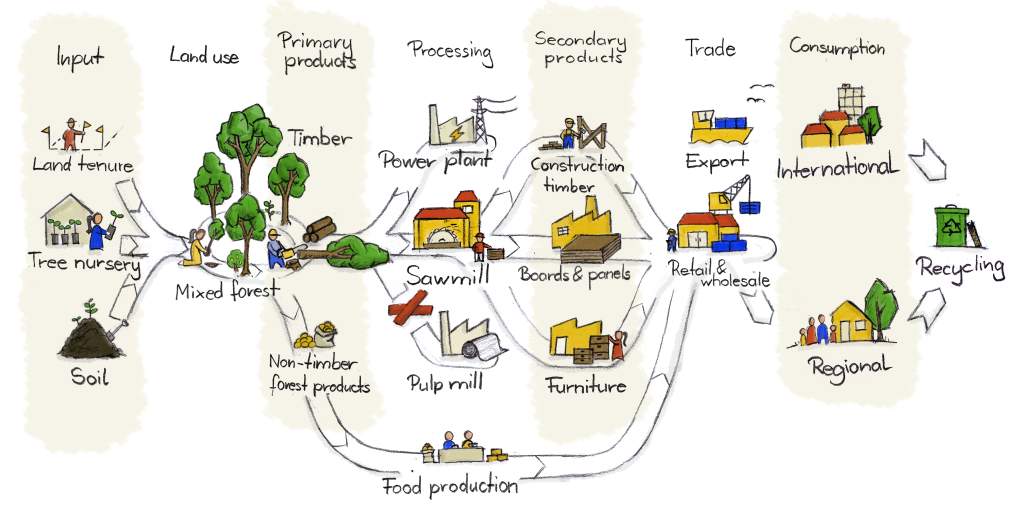
Photos
Like a tour guide, most stories have a protagonist who leads you through the story. As no one will follow a stranger, you need to build up empathy and trust while introducing your main character. A photo is the simplest way to make eye contact, which is a first step in building up empathy and trust.
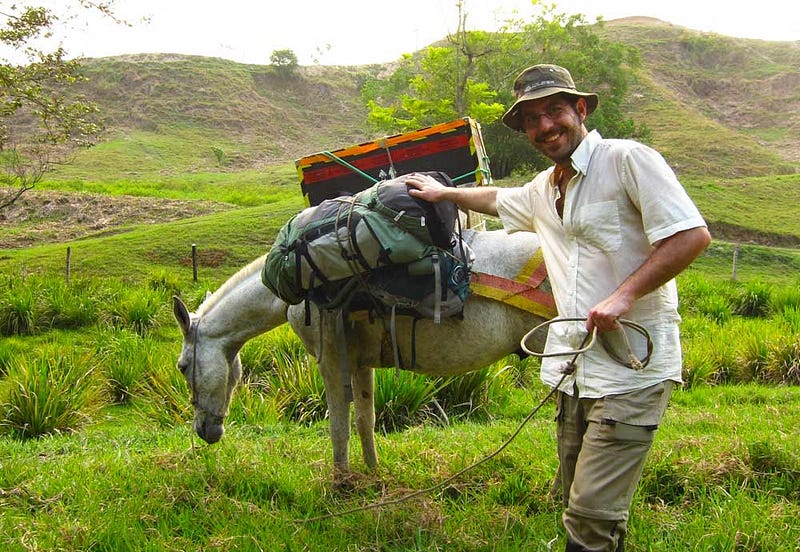
Sound & music
Sound is a medium that goes very deep and stays in our memories for a long time. As a stand alone or as background it can help to attract and amplify attention and curiosity.
If you have ever stayed in the jungle during the night, you will know that forests accommodate an orchestra of stories. This is a mysterious experience and rare insight you will never forget. Close your eyes and listen to the music of the jungle of Suriname at night.
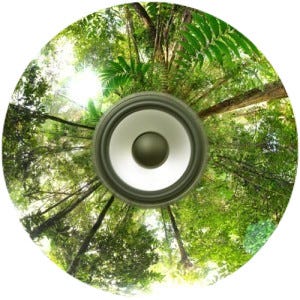
Video
See through the eyes of the protagonists. Gasp together. Laugh together. Weep together.
A video can take you to the places where it has happened and rebuild the story inside your mind. Perspectives, emotions and experiences become alive, vital and impact full. While watching the following video you will immerse deeply into the story of an indigenous Cambodian community that fights against illegal logging to protect its sacred forest.
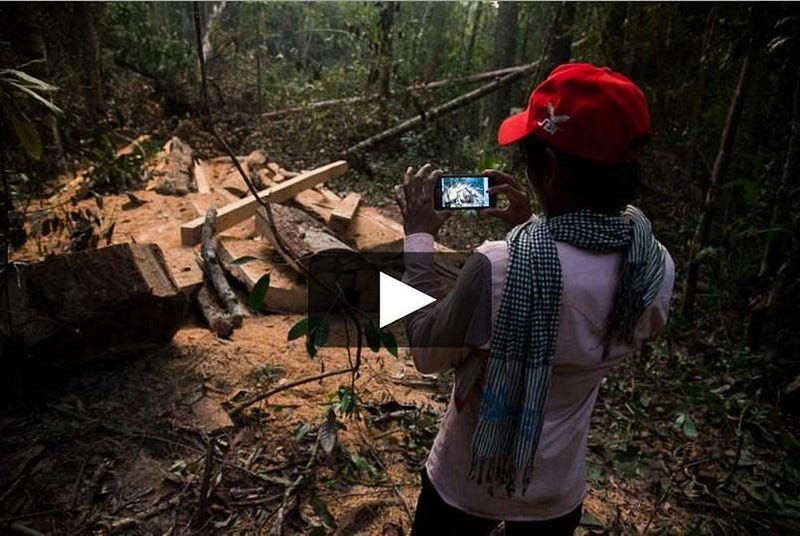
Aerial photo panorama
From the birds eye perspective the human impact on landscape level becomes perceptible. Using aerial photo panoramas, you will be able to see for example a gold mine that is eating up the fertile land and leaves nothing for future generations. Seeing this devastating destruction creates an uncomfortable feeling. However, ignoring and trivializing these feelings as well as denouncing those who are responsible, does not help find a practical solution. But, how can we get started?
Fairventures Worldwide is a forerunner in Borneo at introducing practical and economically viable alternatives to surface mining and oil palm plantations. They use aerial panoramas taken by drones as one way to create transparency, which allows their stakeholders to explore the positive impact of their reforestation efforts.
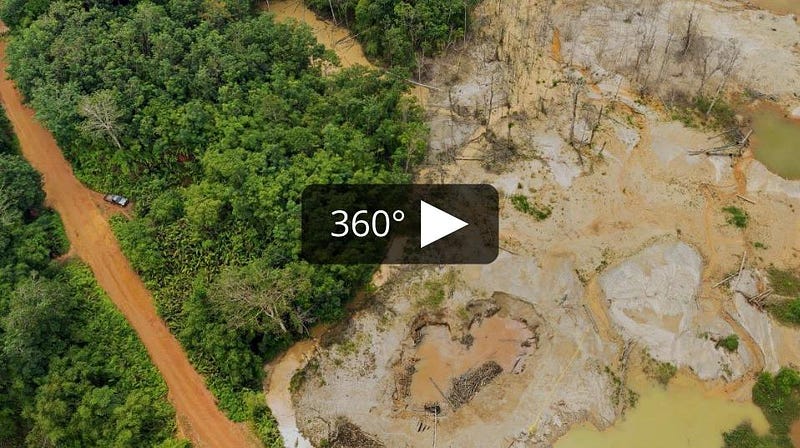
Rich multi media
The story of the vanishing roots of a Cambodian indigenous community is told step by step using text, maps, charts, photos and videos. There are great multi media tools likeAtavist to compile your own forest story and make it accessible via the internet.
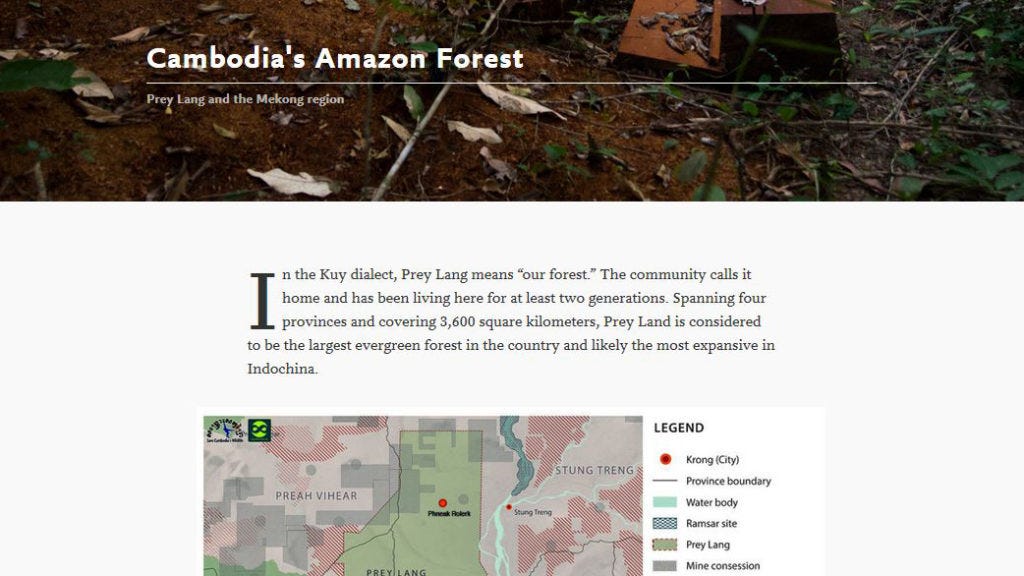
Virtual tour
A combination of interconnected 360° aerial and ground photo panoramas, allow the recipient to become an active explorer of your forest project. Accessible through the internet from around the world, the birds eye perspective and the local jungle sounds create a rewarding experience and brings people closer to the forest. Explore the virtual tour.
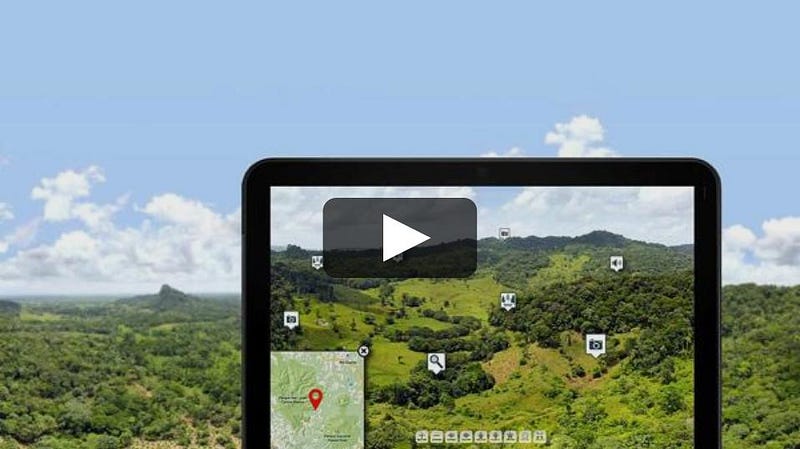
Web map
An interactive web map as the following example shows, is a comprehensive and structured source of various media and databases. Vast amounts of information, like satellite maps, drone based maps, aerial panoramas, project polygons, geo-located picture galleries, descriptive texts and forest monitoring results are compiled to be explored in an interactive and curios way.
Being moved by the vivid and unexpected direction of a story is only the beginning. With the help of such web map, anyone with access to the internet is now able to explore a forestry project and get a deeper understanding and stronger relation with the local people and landscape.
From here it is just as small step to get actively involved and to become part of the story of change.
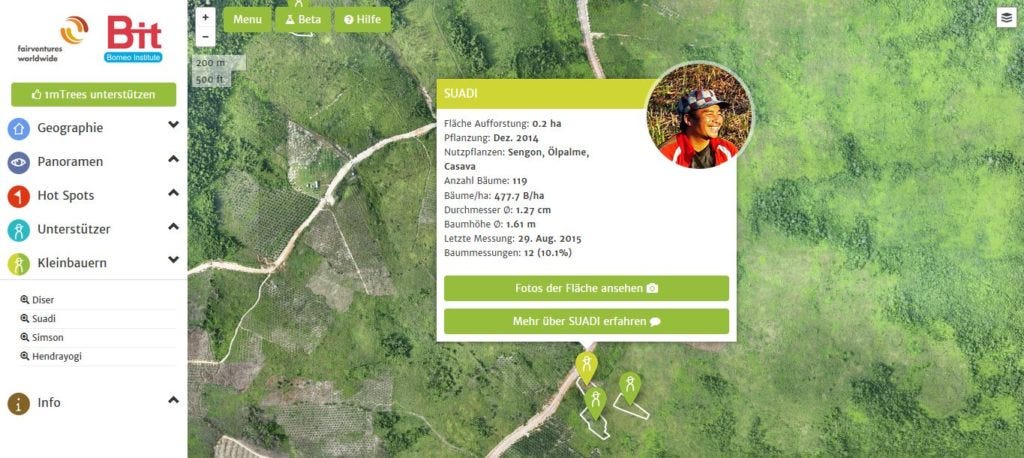
Ethics of story telling
Discussing story telling from a methodological point of view is not sufficient. The ethics of story telling are also fundamental. Especially when disclosing information about private persons, story telling gets sensitive. An explicit consent by the person who’s story is published is necessary and is part of a broader code of ethics. Ethical story telling should be accurate and fair. The author should be honest and courageous in gathering, reporting and interpreting information. Ethical authors treat sources, subjects, colleagues and members of the public respectfully, and further the author needs to report independently and take responsibility for his work.
